COUNTBLANK function in Excel is an indispensable tool for data analysis and quality assurance. By starting with “COUNTBLANK function in Excel,” you ensure that your readers immediately understand the topic. This function simplifies the process of counting empty cells in a range, making it easier to validate your data and ensure completeness. Whether you’re working with large datasets or simply want to keep track of missing information, COUNTBLANK is your go-to solution. With its precise functionality and ease of use, this Excel function empowers you to make informed decisions based on the integrity of your data. In this article, we’ll explore the various applications and benefits of the COUNTBLANK function, helping you streamline your data analysis and reporting tasks.
These content covered
- What is COUNTBLANK Function in Excel?
- How to Count empty cells with COUNTBLANK?
- How to Count if cell is blank using COUNTIFS or COUNTIF?
- Apply to Count blank cells with conditions
- Apply IF COUNTBLANK formula in Excel
- Apply Count blank rows, not cells
- Apply strings.
1. What is COUNTBLANK Function in Excel?
This is the function where you can easily count empty cell or rows. It is useful for identifying and counting empty cells in a dataset, which can be helpful for data cleaning, validation, and analysis. The COUNTBLANK function is a powerful tool that can be used for a variety of tasks in Excel. By understanding how to use the COUNTBLANK function, you can improve your data analysis and reporting skills.
2. How to Count empty cells with COUNTBLANK?
By following the below steps you can count empty cell with use of COUNTBLANK formula in excel.
Step 1: Click equal sign ”=”
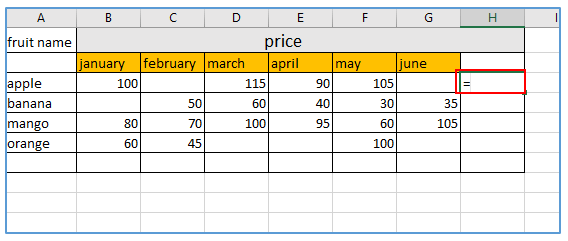
Step 2: Type COUNTBLANK formula and double click on COUNTBLANK and you see as like that picture
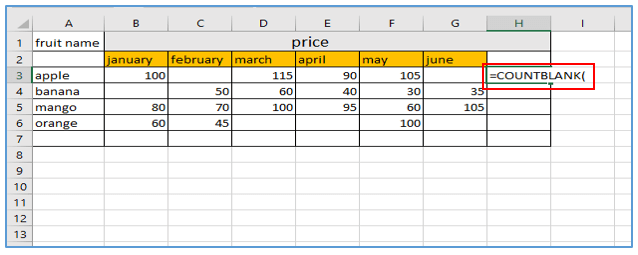
Step 3: Then you have to select the range B3:G3
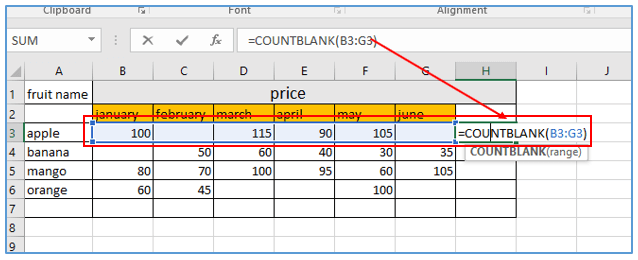
Step 4: Click enter button and get the result like below:

3. How to Count if cell is blank using COUNTIFS or COUNTIF?
This is the another way of to find or count the empty cells to use COUNTIF or COUNTIFS.
In this phase, the steps is same as like as COUNTBLANK formula and we use those avobe formula instead of COUNTBLANK. In the following you can see the steps:-
Step 1: Select the cell in which you can use this formula. For finding empty cells you can follow the below picture.
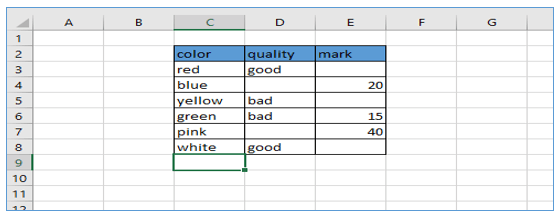
Step 2: Click equal sign “=”.Then put here COUNTIFS or COUNTIF formula with double click. Those are same for finding value. You can see range, critera.
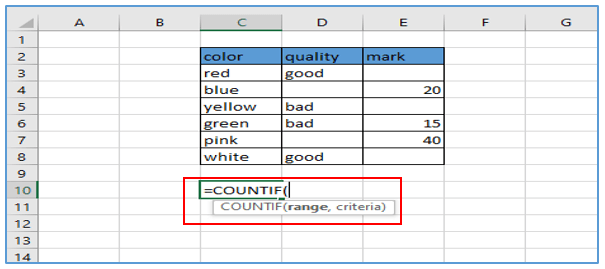
Step 3: After write the formula you can select the range and criteria. Where range value is D3:D8.
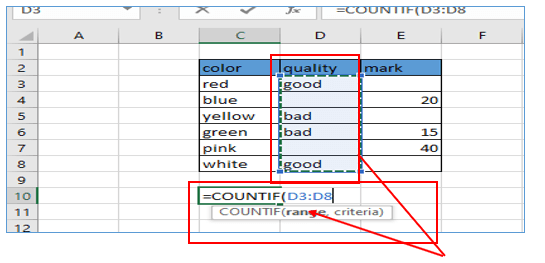
After putting the range value the enter the criteria (“”) as shown.
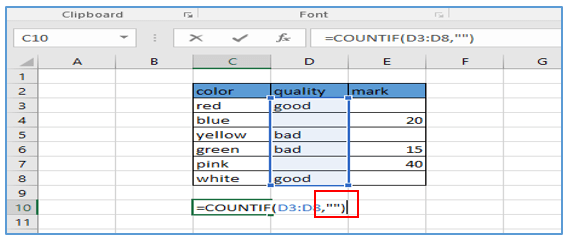
Step 4: here Click the enter button then get result(2). Follow the same steps you can get result MARK coloumn.
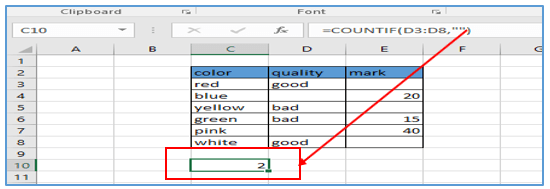
4. Apply Count blank cells with conditions
when you need to count empty cells based on a condition, COUNTIFS is the best function because it supports numerous criteria in its syntax.
COUNTIFS function allows us to check multiple criteria within multiple columns, and to count the number of occurrences where all criteria were met.
Step 1: Select the cell in which you can use this formula. For finding empty cells you can follow the below picture.
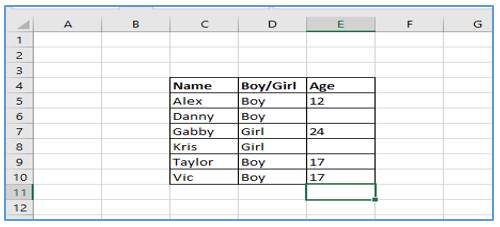
Step 2: Click equal sign “=”. Then put here COUNTIFS formula with double click. You can see range, critera.
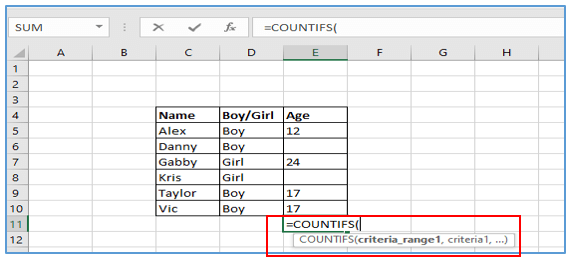
Step 3: After insert formula then you make additional Colum which is condition. Its means where you can find blank cells for this specific condition, here is the bellow picture for understand.
In the picture BOY is condition and you find how much empty cells belongs boy.
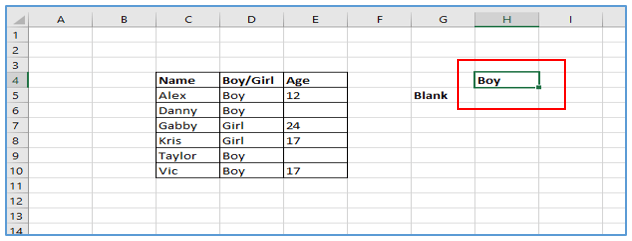
Step 4: After that you select the range D4:D10 , put the condition value H4 and select criteria range E4:E10 however,( “” ) for blank cells.
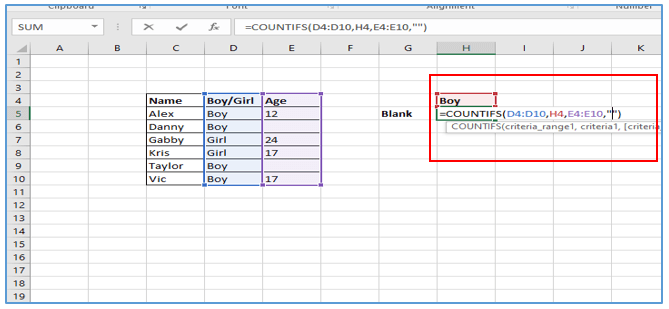
Step 5: Now, Click enter and get the result.
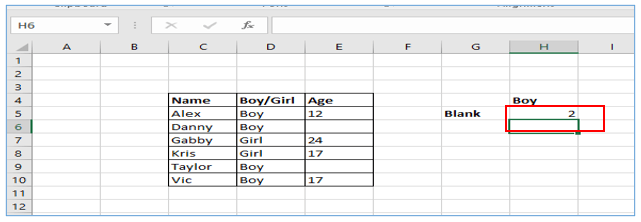
5. Apply IF COUNTBLANK formula in Excel
Depending on whether or not there are any empty cells in a range, you might need to do more than simply count them.
Excel does not come with an IF COUNTBLANK function by default, but you can easily create your own formula by combining the IF and COUNTBLANK functions. This is how:
Step 1: For this formula we can use the same example and add BLANK colum as shown.
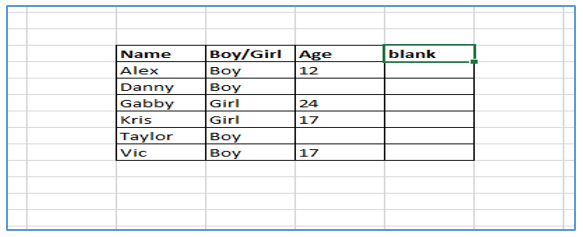
Step 2: Click the equal sign”=”. After insert the IF COUNTBLANK formula:
Formula is using here.
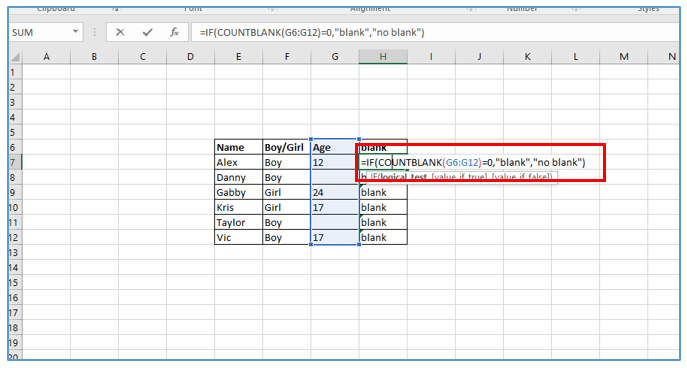
- You can see, Here range is G6:G12
- Check if the blanks count equals zero and put this expression in the logical test of IF:
COUNTBLANK(G6:G12)=0
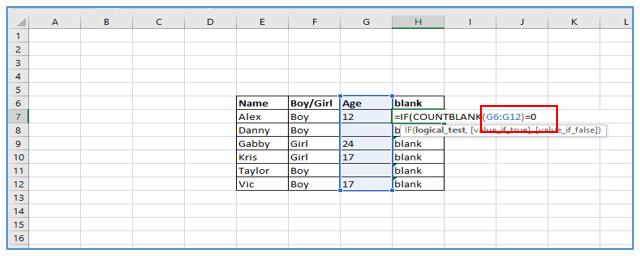
- If the logical test evaluates to TRUE, output “No blanks”.
- If the logical test evaluates to FALSE, output “Blanks”.
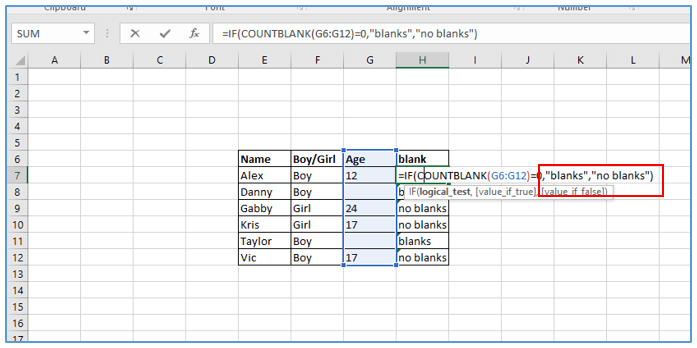
6. Apply Count blank rows, not cells
One way to count blank rows is to use the COUNTBLANK. Here is provide some steps in following bellows :-
The easiest solution that comes to mind is to add a helper column and fill it with the Excel COUNTBLANK formula that finds the number of blank cells in each row. Here is the example :-
Step 1: Click the equal sign “=” and Insert the formula COUNTBLANK. You can follow the image.
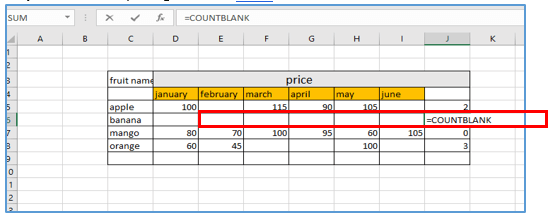
Step 2: Here, Select the rang D6:I6
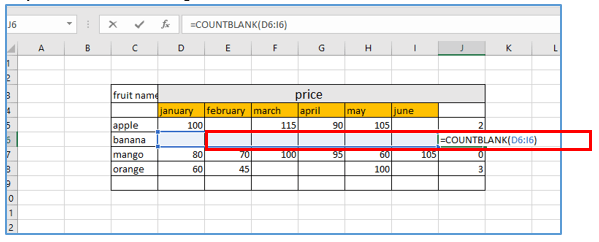
Step 3: Now, Press the enter and you get the result of empty rows not cell as you can see below.
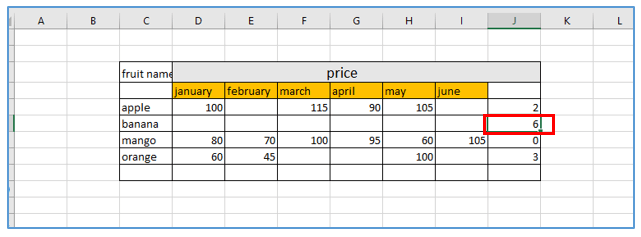
7. Apply Count truly blank cells, not empty string
To count truly blank cells, not empty strings, in Excel, you can use the following formula:
=COUNTIF(range, “”)
This formula will count the number of cells in the range that contain the empty string (“”). In the following bellow ,you can follow those steps:
Step 1: For this formula we can use the same example and add BLANK colum. Then Click the equal sign”=” as showing.
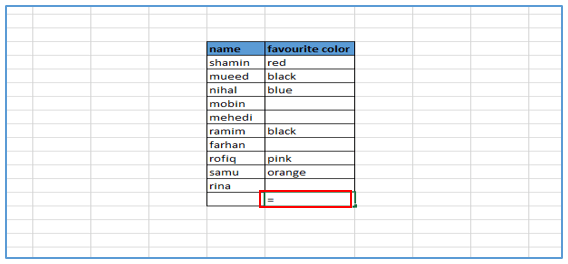
Step 2: Insert the formula =COUNTIF(range, “”)
- Range E4:E14
- Criteria “” as well as empty string
Using the formula here.
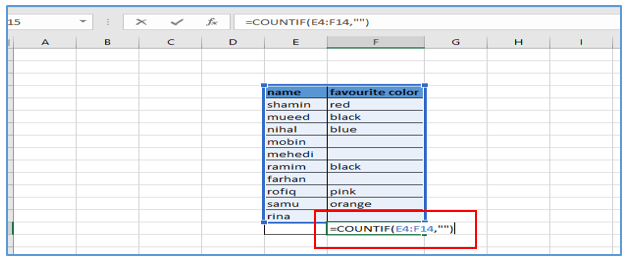
Step 3: Now, Click the enter and it will be shown the result.
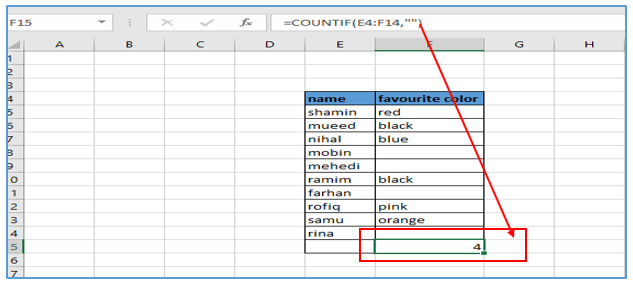
Application of COUNTBLANK Function in Excel
- Count Empty Cells: The primary purpose of COUNTBLANK is to count the number of empty cells within a specified range. It helps you quickly determine how many cells are devoid of any data.
- Check Data Completeness: You can use COUNTBLANK to check the completeness of a dataset. If the count is zero, it indicates that all cells in the range are filled, ensuring data integrity.
- Validate Form Responses: When you receive form responses in Excel, you can apply COUNTBLANK to verify if participants have left any questions unanswered, helping you identify incomplete submissions.
- Monitor Inventory: For inventory management, COUNTBLANK can be employed to track the quantity of empty cells in a stock database, aiding in reordering decisions.
- Evaluate Survey Results: When analyzing survey data, use COUNTBLANK to assess the number of unanswered questions, which may indicate areas where participants found the survey confusing or skipped questions.
- Assess Data Entry Accuracy: COUNTBLANK is useful for data entry validation. By counting empty cells in a dataset, you can identify potential errors or omissions in your records, ensuring data accuracy.
These various applications of the COUNTBLANK function in Excel make it a valuable tool for data analysis, quality control, and ensuring the completeness of your datasets.
You may be interested:
